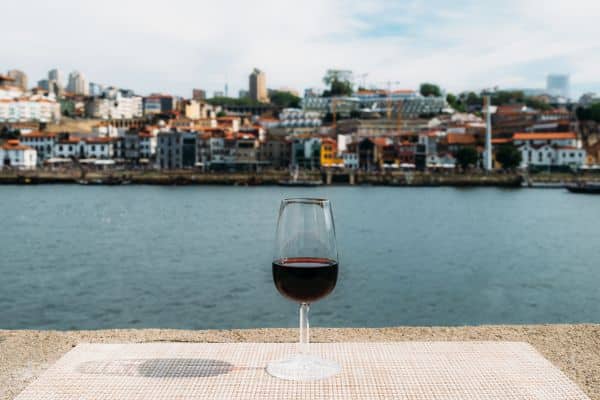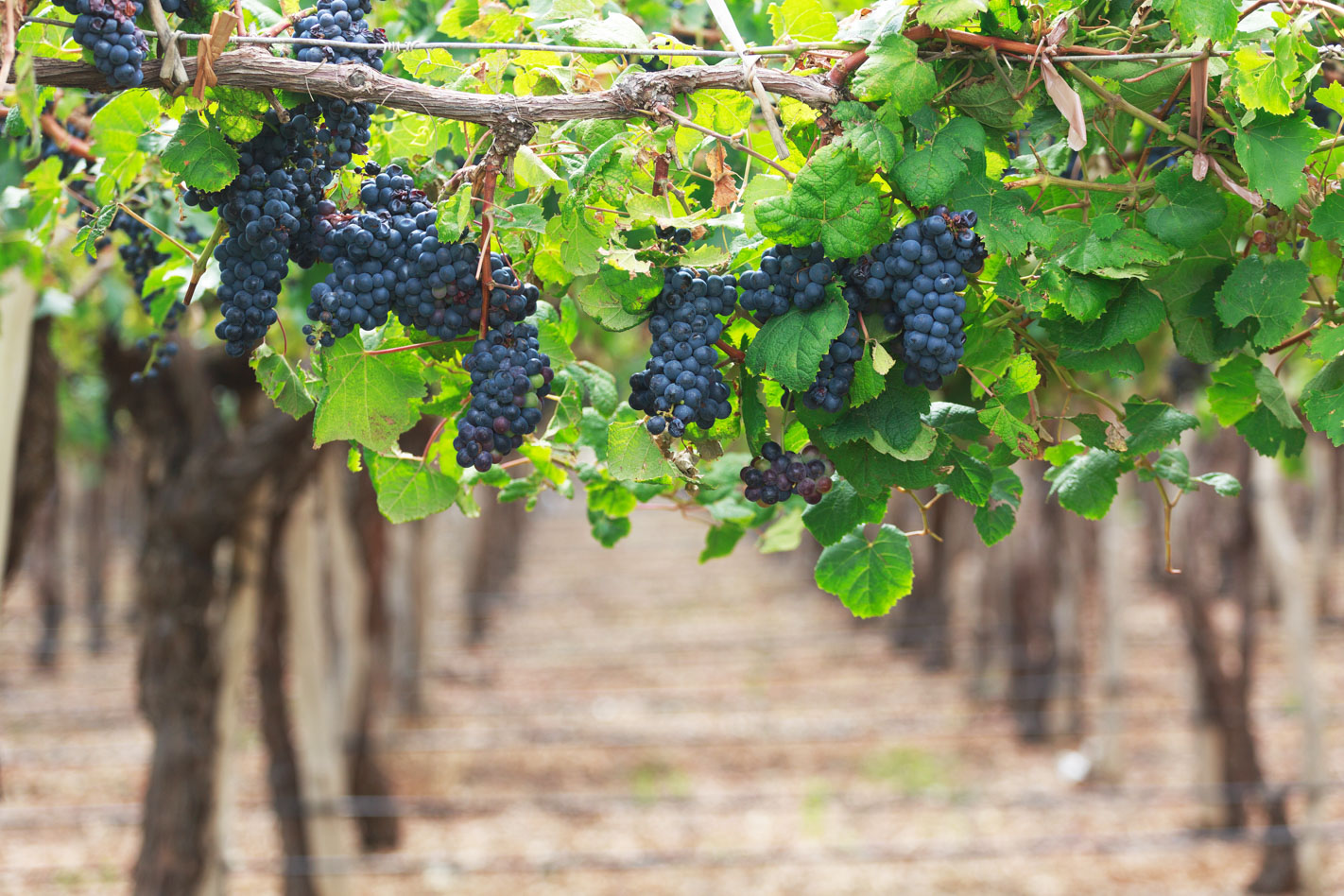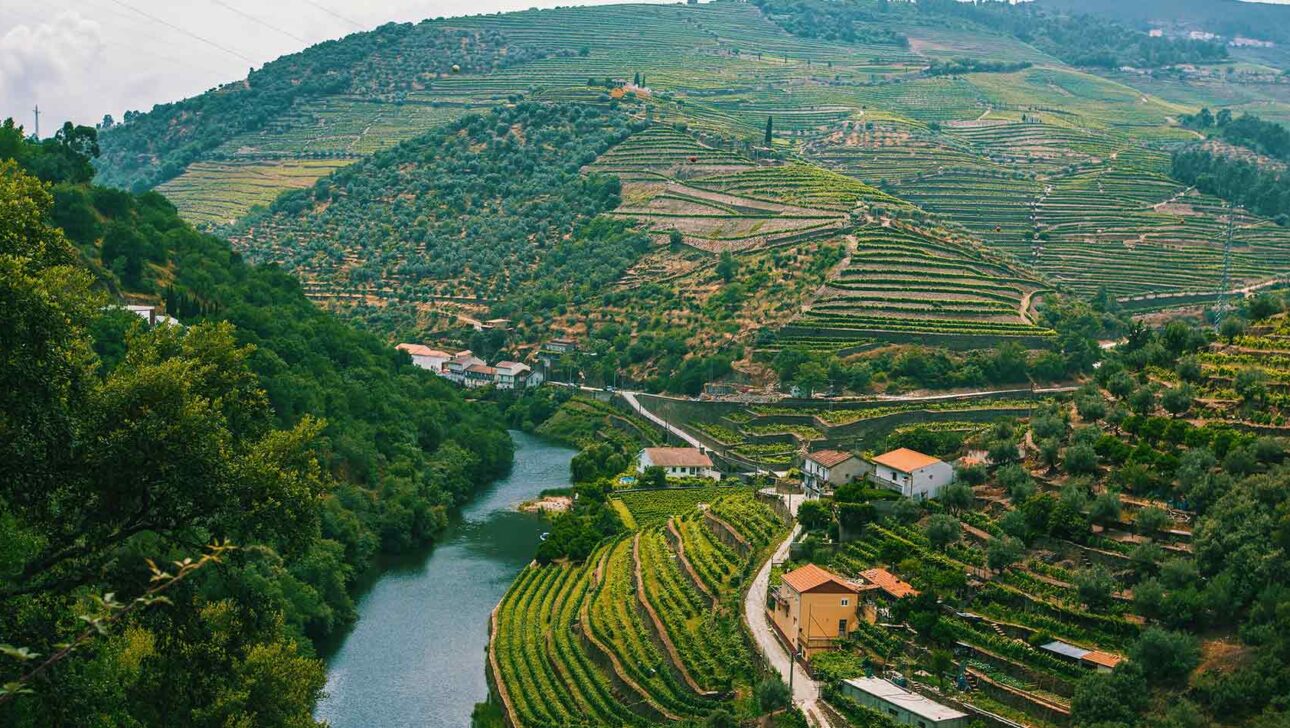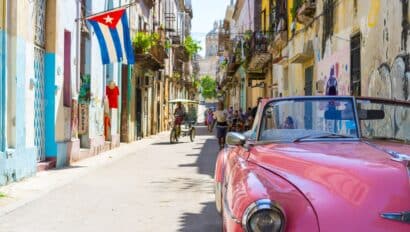If you’re a curious traveler with a penchant for wine, what could be better than immersing yourself in one of the world’s most notable wine regions? In Portugal’s dreamy Douro Valley, you’ll not only explore vineyards and taste their celebrated wines, but you’ll have the chance to float down the “River of Gold” on a traditional rabelo just as casks of wine did in the earliest days of Portuguese winemaking.
Not just a cinematic backdrop to your cruise, the terraced vineyards that cling to hillsides and cliffs rising from the water’s edge are your walking destination with Classic Journeys. Wander through rows of grapes with the winemakers who tend them. Learn to graft vines and trim and harvest the grapes by hand. Later, take those long-awaited sips of acclaimed local wines.
What makes Portugal’s Douro Valley so special? Is all Portuguese wine Port (hint: no)? Read on to learn more about the world’s oldest demarcated wine region.
Portuguese Port Wine

Port wine is the Douro’s calling card. Ports of all types and colors originate here, as well as some dry red and white tables wines that are often labeled as Douro. Port itself is a fortified dessert (sweet) wine produced from grapes grown only in the Douro Valley. In fact, like Champagne, which must come from a specific wine region in France to earn its moniker, true Port must come from the Douro Valley. Vineyards aren’t hemmed in by any one variety and often grow a cross-section of grapes.
Growers cultivate these unique grapes varieties, then harvest and ferment them to create typical red wines. It’s only then that the Port process can begin. The unfortified red wine is taken to Port houses in Porto, where a distilled spirit is added. The result depends on when the spirit is added, and how and for how long the wine is aged. While Port is generally known as a full-bodied, sweet red wine with notes of berry, caramel, cinnamon and chocolate, just as there are many types of wine, there are a variety of Port styles to suit different tastes. You’ll find dry, semi-dry, white and rosé selections among more than 50 different Port varieties. Some of the best-known styles include:
Tawny Port: Barrel-aged, slightly sweet, complex
Ruby Port: Bottle-aged, younger, fruity
Vintage Port: From an exceptional wine year, barrel-aged for no more than 2 years before bottling, can be aged 10-50 years in the bottle
Crusted Port: A newer, unfiltered version that has a sediment (or crust)
Colheita Port: Barrel-aged for at least 7 years, single-vintage, best enjoyed soon after bottling
The Valley’s Port Wine Grapes

Both still and fortified wines produced in the Douro Valley can be sourced from more than 80 grape varieties, but the area vineyards tend to focus on these six for the region’s wines: Touriga Franca (one of the most widely planted), Touriga Nacional (the most highly regarded), Tinta Barroca, Tinta Cão, Tinta Roriz (or Tempranillo) and Tinta Amarela. (We’ve also provided a few pairing tips!)
Touriga Franca
This dark-skinned grape variety is used in Port and dry red wines, resulting in a lighter, more perfumed wine than the Touriga Nacional. The grape is a cross between two indigenous Portuguese wine grape varieties: Mourisco Tinto and Touriga Nacional. Pair it with: Dry variety with Portuguese-style beef stew, or fortified variety with dark chocolate
Tinta Roriz
Already celebrated as the base of some of Spain’s finest wines, Tinto Roriz (as Tempranillo is known in Portugal) is used for both table and Port wines. The thick-skinned red grape tends to be blended with other varieties instead of used on its own and creates a deep-colored red wine. Pair it with: Brazilian feijoada stew or roast lamb
Tinta Barroca
One of the most common red-wine varieties in the Douro Valley, this grape is well suited to Port, thanks to the fruit’s high sugar levels. The grapevines yield generously, making it a grower’s favorite. Pair it with: Rump steak or slow-roasted pork shoulder
Touriga Nacional
This dark-skinned grape is considered by wine connoisseurs to produce Portugal’s finest reds. The grapes are planted in the Douro and Dao regions and are being increasingly used for table wines as well as Port. The grapes bring structure and body to the wine, have high tannins and boast a concentrated black fruit flavor. Pair it with: Dry variety with sirloin steak, or fortified with chocolate or custard desserts
Tinta Amarela
This purple-skinned, red-wine grape has seen increasing use in the Douro region recently. It creates full-bodied, rich, aromatic red table wines and Port wines, with hints of blackberries, herbs and flowers. Pair it with: Traditional Cornish pasty or citrus-rubbed veal chops
Tinta Cão
Grown primarily in the Douro region since the 16th century, this grape has low yields, yet produces a high quality of wine. The grapes are darkly hued, but the wines they produce are not as deep in color as Touriga Nacional, Touriga Franca and Tinta Roriz. The variety’s tannins and acidity give longevity to the Port blend. Pair it with: Dry variety with braised pork chops, or a fortified variety with chocolate or Stilton cheese
European Wine Regions

In Europe, wine is ingrained in the culture and fabric of a region. You can base a trip around vineyard tours and tastings, or you can punctuate a wider sightseeing itinerary with sips and nibbles at the area’s best wineries, in between visits to cathedrals and art museums.
Find your European wine-tasting nirvana with Classic Journeys’ wine region walking trips. In addition to the Douro Valley, we offer tours in the Bordeaux, Chianti (Tuscany), Sicily and Istria regions. No matter how deep your wine love runs, you’re almost certainly guaranteed bucolic vistas, a slower pace, fabulous food, and authentic interactions with the locals who love their land and its fruits.
Are you ready to immerse yourself in the Douro Valley wine region? Start planning your trip of a lifetime by contacting our Travel Experience Team.





